
. > WHAT'S NEW > BOOKS
“Blue Book of Cities in China No.6” Published
Author : Source : Chinese Social Sciences Today 2013-08-08
China’s urbanization is driven mainly by industrialization; this industrialization-driven path is actually a “market-before-city” model of urbanization, which represents China’s real experience in economic development and its real advantage, said Li Yang, Vice-President of CASS, in his address at the press conference for the “Blue Book of Cities in China No.6” and the Summit Forum on China’s Urban Development, on the theme of “Promoting the integration into the cities of the Rural Migrant Population” in the lecture hall of CASS in Beijing, on July 30.
Regarding further urbanization, Li added, the following five aspects are worth researching:
Firstly, what is the aim of urbanization?
Secondly, urbanization entails urban and rural institutional integration. Tackling the problems of the dual economy is also part of the process of urbanization. The dual economy in China, however, is different from that of other countries, in that the duality is not only economic, but also institutional.
Thirdly, urbanization is specifically about equalizing urban and rural public services. The difference between the status of urban and rural residents lies mainly in the inequality of public services. The equalization of public services is thus the most important aspect of urbanization.
The fourth issue we have to consider is whether to put the city before the market or the market before the city. In western countries the priority is given to the market, in other words to industrial development. In the past we failed to take cities’ economic capacity into account when building them. Given the existing conditions, we should develop the market first, prioritizing industrialization to foster a modern urbanization.
Fifthly, it is necessary to consider what the driving force of urbanization should be. Should it be government, enterprise, or market driven? Up to now it is the government who has played the dominant role. This is good if the government works smartly and observes the rules, but if this is not the case, then “ghost cities” may well be the result. In this case, it is the enterprises who should come to the fore and lead the process.
Wei Houkai, Deputy Director of the Institute for Urban and Environmental Studies, CASS, gave a keynote speech. He elaborated on the general report to “Promote the integration into the cities of the Rural Migrant Population” focusing on six aspects: the definition and content of the integration into the cities of the rural migrant population, the current status quo of Chinese rural migrants and of their path to integration, the six obstacles towards their integration, an estimation of the size of the rural migration population to be integrated, and the general attitude and policy measures necessary to promote the integration of this population.
In the subsequent forum, presided over by Pan Jiahua, Director of the Institute for Urban and Environmental Studies, CASS, some of the participants aired their views vigorously.
Chen Wenling, Director of the Comprehensive Department, Research Office of the State Council, claimed that the rural migrant population has contributed a great deal to China’s economic growth, so it is highly urgent to accelerate its integration into the cities. There are currently some issues which need to be discussed: the difference in proportion between cities and the countryside; the relationship between local integration and trans-regional integration; the relationship between big, medium and small cities and between regions; and the relationship between advances in reform and proper policy adjustments.
Yang Yiyong, Director of the Institute of Social Development under the National Development and Reform Commission, delivered a speech entitled “Urbanizing the rights of the migrant people is at the heart of the new urbanization”. He cited Marx’s words that “all irrationality can be attributed to institutional irrationality” to expound on how to improve and optimize the system. According to Yang, we should hold a different attitude towards the immigration of rural workers, respect their right to enter the cities, and reward them for the contributions they have made.
According to Chen Huai, Former Director-General of the Policy Research Center of the Ministry of Housing and Urban-Rural Development, a systematic, high-level and long-term understanding of the problems of China’s urbanization and of the relevant rules is badly needed at present. The entry of migrant workers into the cities and their integration into their new environment touches upon four basic issues: household registration, employment, social security and housing.
Migrant workers have in fact made great contributions to urbanization. They should have accumulated some of the social security resources that have been deducted from their wages, but these deductions fail to provide the material resources needed for their integration into the cities. The social security issue is not about how the government raises money to pay migrant workers, but how to institutionally return to them what has already been deducted, he added.
Zhang Juwei, Secretary of the Party Committee of the Institute of Population and Labor, CASS, contended that the current urbanization is not yet complete. It is in fact a semi-urbanization. A complete urbanization is one which urbanizes everyone and everything, including infrastructure, housing, and communications. Only by unifying human and material resources can we achieve a complete urbanization. Such a style of urbanization is exactly what we need, and it could power future economic growth.
Translated by Chen Mirong
Revised by Gabriele Corsetti
Ye Shengtao made Chinese fairy tales from a wilderness
Ye Shengtao (1894–1988) created the first collection of fairy tales in the history of Chinese children’s literature...
-
How northern ethnicities integrated into Chinese nation
2023-09-18
-
Mogao caves
2023-09-12
-
Mogao Grottoes as ‘a place of pilgrimage’
2023-09-12
-
Time-honored architectural traditions in China
2023-08-29
-
Disentangling the civilizational evolution of China
2023-08-28
-
AI ethics in science fiction
2023-08-23




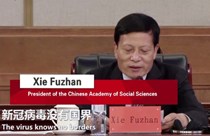
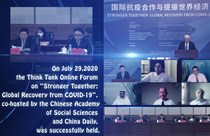
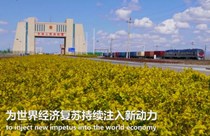
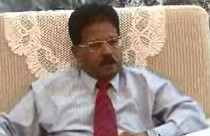


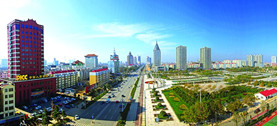


 2011-2013 by www.cssn.cn. All Rights Reserved
2011-2013 by www.cssn.cn. All Rights Reserved